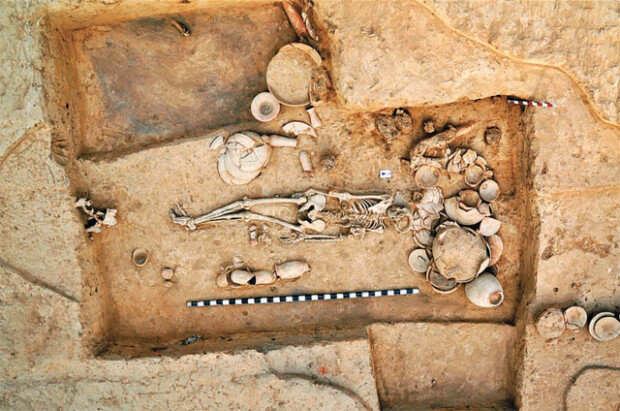Scientists unravel mysteries of Indus Civilization with genome
Scientists unravel mysteries of Indus Civilization with genome
Posted September. 06, 2019 07:30,
Updated September. 06, 2019 07:30

An analysis of the genomes of more than 500 ancient human beings has shown that the people who gave rise to the Indus Civilization, one of the world’s oldest urban civilizations, were descendants from those who migrated from what is now Iran. They had their own agricultural revolution and created a high level of urban civilization, only to disperse due to climate changes, becoming today’s Southeast Asians by mixing with nomads from Southeast Asia and Europe.
A team of scientists led by David Reich, a professor of genetics at Harvard Medical School, decoded the genomes of the remains of 523 people who lived in Central and South Asia from about 8,000 years ago till now to shed light on the course of South Asians’ migration and the evolution of their civilization. The result of the study was released on the September 6 editions of international journals Science and Cell.
The Indus Civilization prospered in what is now northwestern India and Pakistan about 3,500 to 4,500 years ago. The civilization built planned cities, such as Harappa and Mohenjo-daro, with tens of thousands of population that had water drainage systems. It also actively traded with other civilizations including Mesopotamia.
However, climate changes caused the region to quickly dry up about 3,500 years ago, prompting much of the population to migrate to other places and resulting in the fall of the civilization. Although it was one of the most important ancient civilizations, the hot and humid climate of the ancient times made it difficult to extract DNA from remains, giving scientists a hard time in figuring out the migration routes. Still, the Reich team was able to identify the routes by tracking down the ratios of genes mixed as the Indus people had exchanges with other groups while migrating.
The team identified the migration routes by extracting and decoding the genomes from the remains of 523 people who lived in Central and South Asia from about 8,000 years ago to the present day. In addition, the scientists identified the people of that time by studying samples from the remains of 61 people excavated from Rakhigarhi, one of the biggest cities in the Indus Civilization. Reich said that while he was not able to decode the genome of each individual because of destruction by heat and humidity, he could collect partial DNA of 61 people to get a grasp of the genome characteristics of the whole group.
The study found that the ancestors of those who led the Indus Civilization were from what is now Iran. It has also been confirmed that the ancestors of the ancient Iranians were from what is now northeastern region of Turkey. Figuratively speaking, the mother of the Indus was an ancient Iranian, while the grandmother was from the northeastern Turkey.
Called the Fertile Crescent, northeaster Turkey is known to be where farming began. Therefore, it has been believed that the Indus people learned farming from the people from northeaster Turkey. However, the latest research found that it did not happen, because the ancient Iranians separated from northeastern Turkey about 12,000 years ago, when the humankind had not started farming yet. It can be said that the Indus Civilization started agricultural independently.
ashilla@donga.com
Headline News
- Med professors announce intention to leave hospitals starting Thursday
- Bridge honoring Sgt. Moon Jae-sik unveiled in Pennsylvania
- Chief of Staff Chung tells presidential secretaries to stay away from politics
- US FTC bans noncompete agreements
- N. Korea launches cyberattacks on S. Korea's defense companies







